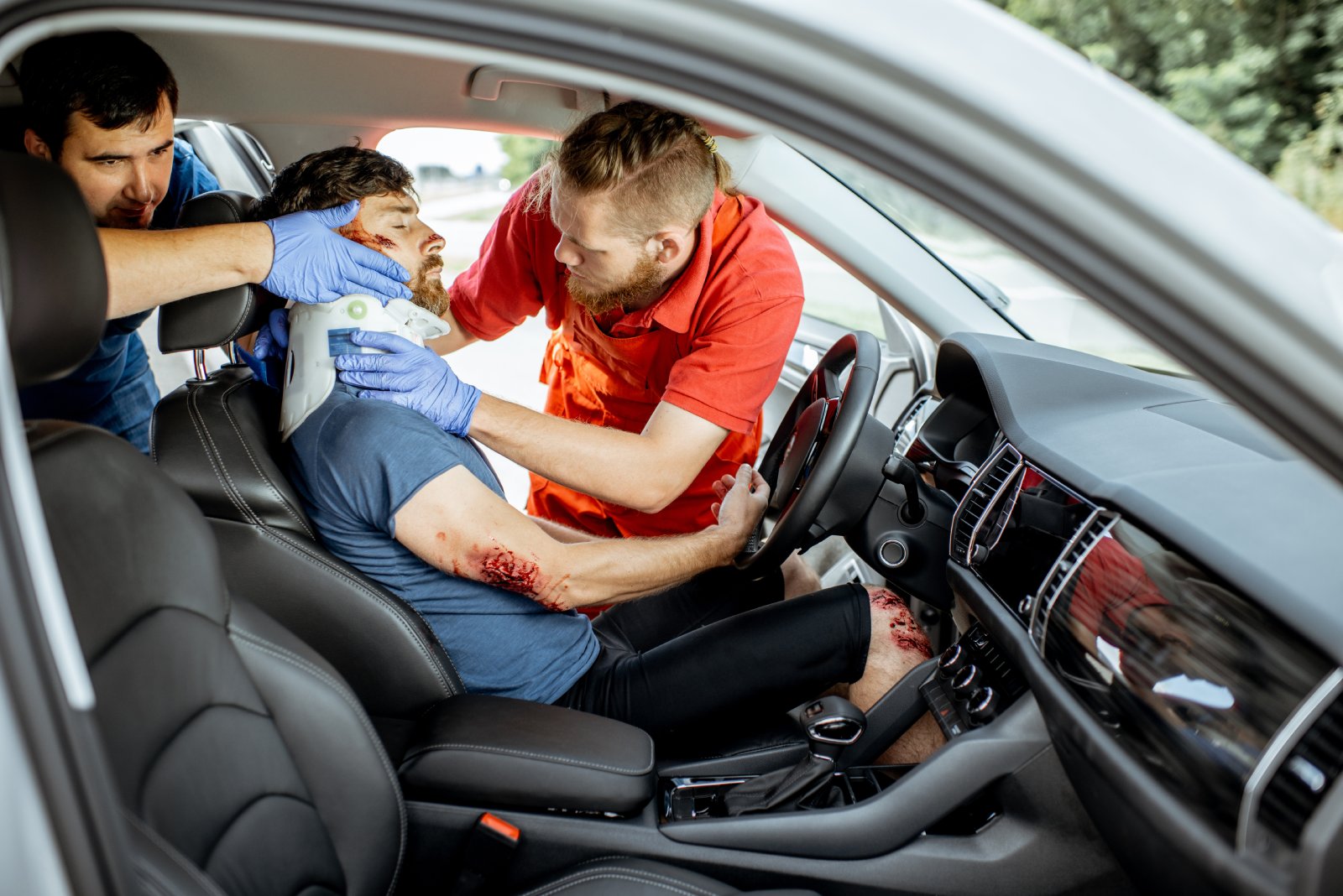The current perception of self-driving cars is not great.
According to Forbes, 93% of people have concerns. And at the same time, 81% of Americans haven’t even been in a self-driving car.
The issues with self-driving cars is it requires humans to put their lives in the hands of machines. As of this writing, this still is a big mental leap for many people.
It’s a tricky new world to navigate – and one that statistics can help shed light on. This blog aims to use facts to illustrate the reality of self-driving cars and driverless cars. Here, we break down the key issues about car accidents that worry many today.
Breaking Down Self-Driving Car Statistics
- There are an average of 9.1 crashes in driverless vehicles per million vehicle miles driven versus an average of 4.2 crashes in conventional vehicles per million miles driven.
- 80 companies are currently testing approximately 1,400 self-driving vehicles on the road.
- Human error accounts for 94% of all accidents, according to the National Highway Traffic Safety Administration. Studies estimate that self-driving cars will reduce that number by 35%.
- The autonomous vehicle industry is expected to grow tremendously in value over the next decade, expecting to reach 2,752.80 billion by 2033, which is a 33% CAGR from 2024 till then.
- 3 out of 4 Americans are afraid of self-driving cars.
- In 2022, there were 400 crashes of vehicles with partially automated driver-assist systems, including 273 involving Teslas.
- 63% of adult Americans say they wouldn’t be comfortable riding in a self-driving car, according to Pew Research.
The Stigma Behind Self-Driving Cars
Self-driving cars have sparked significant debate regarding their safety compared to traditional human-driven vehicles. According to recent data, self-driving cars are involved in 9.1 accidents per million miles driven. In contrast, traditional vehicles, driven by humans, have a lower accident rate of 4.1 accidents per million miles driven.
This higher accident rate for self-driving cars may seem alarming at first glance, but it’s essential to dig deeper into the nature of these motor vehicle crashes. Many of these incidents involving autonomous vehicles occur at lower speeds and result in less severe outcomes.
For example, self-driving cars are more prone to rear-end collisions, primarily due to the conservative braking strategies employed by autonomous systems. These collisions, while frequent, often lead to fewer serious injuries compared to high-speed accidents typically seen with human drivers.
However, it’s also worth noting that the technology is still relatively new, and the data can be skewed by various factors, including the small number of autonomous vehicles on the road compared to traditional cars. And, of course, you find yourself in a car accident, be sure to get an accident report.
Human Error vs. Autonomous Vehicle Safety
According to the National Highway Traffic Safety Administration, 40,990 people died in car accidents in the United States in 2023. Autonomous vehicles are designed to reduce these errors by eliminating distractions, fatigue, and impaired driving.
Fully autonomous vehicles, which can operate without human intervention, have the potential to significantly reduce human error in accidents by relying on advanced technology and safety protocols.
For instance, self-driving technology uses sensors and artificial intelligence to monitor the environment and make split-second decisions that would be challenging for a human driver.
Despite this, autonomous vehicles are not entirely free from challenges. While they can reduce certain types of errors, they still struggle with complex situations that require human intuition and experience. These include reacting to unexpected behavior from other drivers, navigating in poor weather conditions, and dealing with unusual road layouts.
As a result, while autonomous vehicles have the potential to reduce overall accident rates, they are currently not infallible.
Types of Accidents and Their Causes
Self-driving cars, while advanced, are still susceptible to various types of accidents, including autonomous vehicle accidents. The most common types of accidents involving autonomous vehicles include:
Rear-End Collisions
This is the most frequent type of accident involving self-driving cars. Autonomous vehicles are programmed to follow traffic rules strictly, which often results in sudden stops if the car detects an obstacle or perceives a potential hazard. Human drivers following these vehicles may not always anticipate these stops, leading to rear-end collisions.
Lane Departure Accidents
Lane-keeping systems in autonomous vehicles are generally reliable, but they can still fail, particularly in poor weather conditions or on poorly marked roads. When these systems malfunction, the vehicle may unintentionally drift out of its lane, leading to potential side-swipe accidents or head-on collisions.
Pedestrian Involvement
Although less common, accidents involving pedestrians can occur, especially in urban environments where people cross streets unpredictably. Autonomous vehicles rely heavily on sensors to detect pedestrians, but in some cases, these sensors may not react quickly enough to avoid a collision.
Intersection Collisions
Navigating intersections is complex, even for autonomous systems. Self-driving cars might misinterpret the actions of other drivers, or other drivers may not anticipate the actions of an autonomous vehicle, leading to collisions at intersections.
Compared to human-driven vehicles, self-driving cars have a higher incidence of rear-end collisions but are involved in fewer pedestrian and broadside (T-bone) accidents. This difference is largely due to the cautious driving behavior programmed into autonomous vehicles, which prioritizes safety but can sometimes conflict with human driving patterns.
Causes Behind Self-Driving Car Accidents
The causes of self-driving car accidents can be categorized into several key areas:
Technology Failure
Self-driving cars rely on a combination of sensors, cameras, and AI to navigate the roads. However, these systems are not foolproof. Sensor failures, software bugs, or issues with the vehicle’s AI decision-making process can lead to accidents. For instance, if a sensor fails to detect an obstacle or misinterprets road conditions, the vehicle may make an incorrect decision, resulting in an accident.
Environmental Factors
Adverse weather conditions such as heavy rain, snow, or fog can impair the sensors and cameras that autonomous vehicles rely on. Poor visibility or slippery roads can lead to accidents, especially if the vehicle’s systems are not equipped to handle such conditions effectively.
Human Misunderstanding of Autonomous Systems
Accidents can occur when human drivers or pedestrians misunderstand the capabilities and limitations of self-driving cars. For example, a human driver might assume that an autonomous vehicle will react like a human driver, leading to misjudgments in distance or speed. Similarly, passengers in self-driving cars might overestimate the vehicle’s abilities and fail to intervene when necessary, leading to accidents.
External Factors
Poor road conditions, such as potholes, debris, or unclear road markings, can confuse autonomous systems, leading to accidents. Additionally, unpredictable behavior by human drivers, such as sudden lane changes or aggressive driving, can also cause collisions, as self-driving cars may not react in time to avoid these hazards.
Understanding these common types of accidents and their causes is essential for improving the safety and reliability of self-driving cars. As technology advances, addressing these issues will be critical to reducing accident rates and gaining public trust in autonomous vehicles.
The complexities surrounding liability and responsibility in accidents involving an automated driving system are significant. Proving fault when a self-driving vehicle is involved can be challenging, particularly when the system was engaged and any potential defects could contribute to an accident.
Legal Responsibility in Self-Driving Car Accidents
One of the most complex aspects of self-driving car technology is determining who is held accountable when an accident occurs. Unlike traditional car accidents where liability is typically clear, accidents involving self driving vehicles can involve multiple parties, including the driver, the manufacturer, and the software developer.
Driver Accountability
In partially autonomous vehicles (Levels 2 and 3), the driver is still expected to be engaged and ready to take control if the system encounters a situation it cannot handle. If an accident occurs under these conditions, the driver might be held responsible, especially if they were not paying attention or failed to intervene when necessary.
Manufacturer Liability
When an accident is caused by a malfunction in the vehicle’s hardware, such as faulty sensors or brakes, the manufacturer may be held liable. Product liability laws can apply in these cases, where the manufacturer is responsible for ensuring that their products are safe and function as intended.
Software Developer Responsibility
In cases where the accident is attributed to a software failure, the company that developed the autonomous driving software might be held accountable. This could involve errors in the vehicle’s decision-making processes, such as misinterpreting sensor data or failing to recognize a hazard.
Given the complexity of these scenarios, it’s often challenging to determine who is at fault. This is where a self-driving car accident lawyer becomes essential. These legal professionals specialize in navigating the intricate legal landscape surrounding autonomous vehicles.
They can help victims of accidents identify the liable parties, gather necessary evidence, and pursue compensation
Vehicle Safety and the Future of Self-Driving Cars

Self-driving cars hold the promise of safer roads, but they also come with challenges. While they show potential in reducing human error, current accident statistics indicate areas for improvement. Before investing in a self-driving vehicle, carefully weigh the benefits and risks.
If you have concerns about liability or safety, consulting a Midwest Injury Lawyers is here to provide valuable guidance. Stay informed, and consider reaching out to an expert today to protect your rights and make the best decision for your future.
